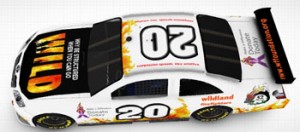The District Ranger at the Pawnee National Grassland in northeast Colorado (map) has postponed a planned prescribed fire after the local county commissioners adopted an ordinance prohibiting it without local permission.

At the center of the controversy is the rare and inappropriately-named Mountain Plover. Unlike it’s name, the bird prefers to nest on flat ground that is bare or has short grass. This type of vegetation, or lack of it, can be found following a fire, very heavy grazing, or in prairie dog habitat. The bird is being considered for listing as a threatened or endangered species by the U.S. Fish and Wildlife Service.
Of the 5,000 to 11,000 Mountain Plovers that are estimated to still exist, many of them like to nest at the Pawnee National Grassland. This would be no problem, except that the U. S. Forest Service, which manages the land, likes to conduct regular prescribed fires to enhance the habitat for the bird. And the ranchers who lease the grazing rights on the public land get very grumpy when the grass they lease is burned off. The Federal grazing fee for 2010 is $1.35 per animal unit month, which is a pretty sweet deal for ranchers, and very generous of the U. S. citizens.
The ranchers think their cattle should be used to graze the area and shorten the grass for the Mountain Plover, but the USFS says this does not reduce enough of the grass to create a good habitat for the the bird.
So the County Commissioners took the side of the ranchers last week and passed an ordinance prohibiting the burns on the USFS land without their permission. Lori Bell, the District Ranger, says the County has no jurisdiction on the federal land, but she has agreed to postpone the prescribed fire until she has a chance to meet with the commissioners on Monday, March 22.
In December of 2008 Ms. Bell signed a Finding of No Significant Impact for a plan to implement a prescribed fire program on the Pawnee National Grassland. There were many opportunities for public input during the planning process. The plan calls for burning up to 6,000 acres each year, with a fire return interval of 10 to 35 years. No more than one-third of any one grazing allotment will be burned in any one year and no more frequently than every 10 years.
In our opinion, sure, the concerns of local residents and permittees should be solicited during the planning process for prescribed fire and other large-scale land management projects, such as when an Environmental Assessment or prescribed fire plan is being written. But after obtaining the input and mitigating any concerns that are appropriate, the best interests of the land and the citizens should be the primary driving force, and not necessarily the loudest of the special interest groups.






